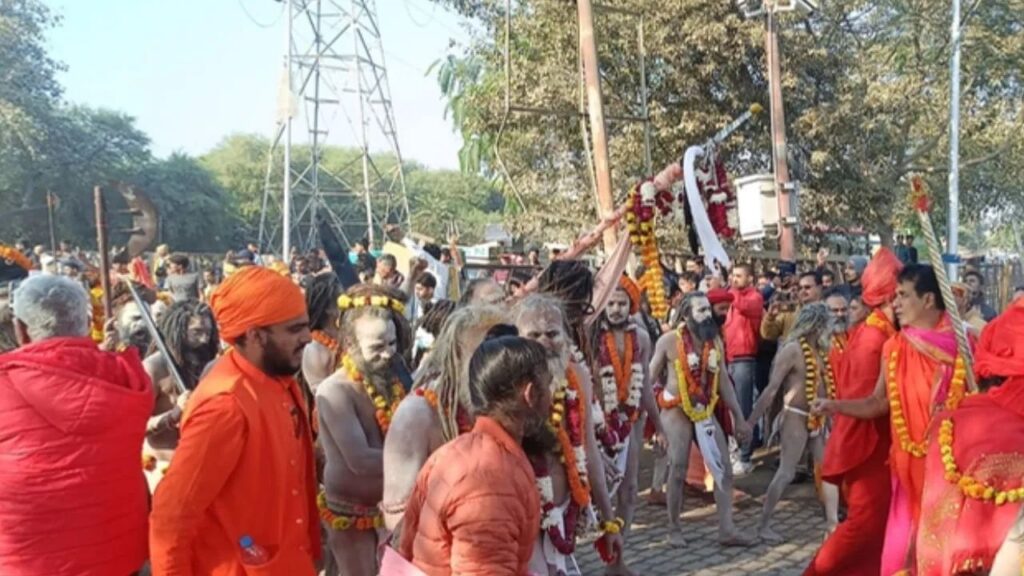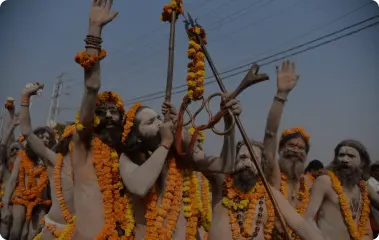The ancient tradition of Akharas stands as one of the most fascinating aspects of India’s Mahakumbh Mela, the world’s largest religious gathering. For first-time visitors, understanding these mystical monastic orders can be both intriguing and overwhelming. This comprehensive guide will walk you through the rich tapestry of Akharas, their significance, and what makes each one unique.
What Are Akharas?
Akharas are ancient monastic orders of saints and sadhus that have been the guardians of Hindu traditions for centuries. Think of them as spiritual military academies that have played crucial roles in both protecting Hindu dharma and preserving ancient knowledge systems. These institutions combine spiritual practices with martial arts training, creating a unique blend of the sacred and the defensive.

The Major Akharas at Mahakumbh
Juna Akhara: The Oldest Order
The Juna Akhara, considered the oldest and largest of all Akharas, traces its origins back to Adi Shankaracharya in the 8th century. Known for their ash-covered bodies and dreadlocked hair, the Naga Sadhus of Juna Akhara are perhaps the most recognizable faces of Mahakumbh. They specialize in the Dashanami tradition and are known for their expertise in Vedanta philosophy.

Niranjani Akhara: The Scholarly Order
Established in Prayagraj (formerly Allahabad), the Niranjani Akhara is renowned for its scholarly traditions. Their sadhus are particularly well-versed in Sanskrit literature and ancient texts. Unlike some other Akharas, they maintain a more structured approach to spiritual practices and are known for their disciplined lifestyle.

Mahanirvani Akhara: The Mystical Order
This Akhara is famous for its tantric practices and deep understanding of yogic sciences. Their sadhus are known for maintaining strict vows of celibacy and following intense spiritual practices. The Mahanirvani Akhara plays a significant role in the Shahi Snans (royal baths) during Mahakumbh.

Anand Akhara: The Blissful Order
True to its name (“Anand” meaning bliss), this Akhara focuses on the more devotional aspects of spirituality. They are known for their musical traditions and bhajan sessions. Their sadhus often carry musical instruments and conduct regular kirtans (devotional singing).

Traditions and Practices
Daily Life in an Akhara
The daily routine in an Akhara begins before dawn with meditation and yoga practices. Sadhus follow strict disciplines including:
- Regular meditation and prayer sessions
- Study of ancient texts
- Physical training in traditional martial arts
- Service to visiting devotees
- Maintaining sacred fires
Initiation Rituals
Becoming part of an Akhara involves rigorous initiation ceremonies. Aspirants must undergo several tests of dedication and endurance before being accepted. The final initiation, known as ‘diksha,’ involves:
- Complete renunciation of worldly life
- Adoption of new spiritual name
- Learning sacred mantras
- Understanding secret traditions of the order
Visiting Guidelines for Mahakumbh
Etiquette and Respect
When visiting Akharas during Mahakumbh, remember:
- Always seek permission before entering an Akhara camp
- Dress modestly and respectfully
- Remove shoes before entering sacred spaces
- Avoid photography without explicit permission
- Maintain silence during prayer times
Best Times to Visit
The ideal time to visit Akharas is during the morning hours (6 AM to 9 AM) when most sadhus are available for darshan and blessings. Avoid visiting during:
- Meal times (usually mid-day)
- Evening prayer sessions
- Shahi Snan days when Akharas are preparing for processions
Historical Significance
The Akharas have played crucial roles throughout Indian history, from protecting temples during invasions to preserving ancient knowledge systems. Their contributions include:
- Safeguarding Sanskrit texts
- Maintaining yogic traditions
- Preserving traditional medicine systems
- Protecting pilgrimage routes
Modern Relevance
In today’s world, Akharas continue to serve as important cultural institutions:
- They act as centers for spiritual learning
- Preserve traditional knowledge systems
- Provide guidance to spiritual seekers
- Maintain ancient Indian martial arts traditions
Planning Your Visit
To make the most of your Akhara visit during Mahakumbh:
Book Prayagtouristguide Travell Guide
Call Us : 9235645523, 9519583338, 9451230835
Email : info@prayagtouristguide.com.com

Conclusion
Understanding the different Akharas adds a profound dimension to your Mahakumbh experience follow Prayagtouristguide. These ancient institutions continue to preserve India’s spiritual heritage while adapting to modern times. Whether you’re a spiritual seeker or a curious traveler, visiting these Akharas offers a unique glimpse into an ancient way of life that has survived for centuries.
For more interesting post checkout Prayagtouristguide




